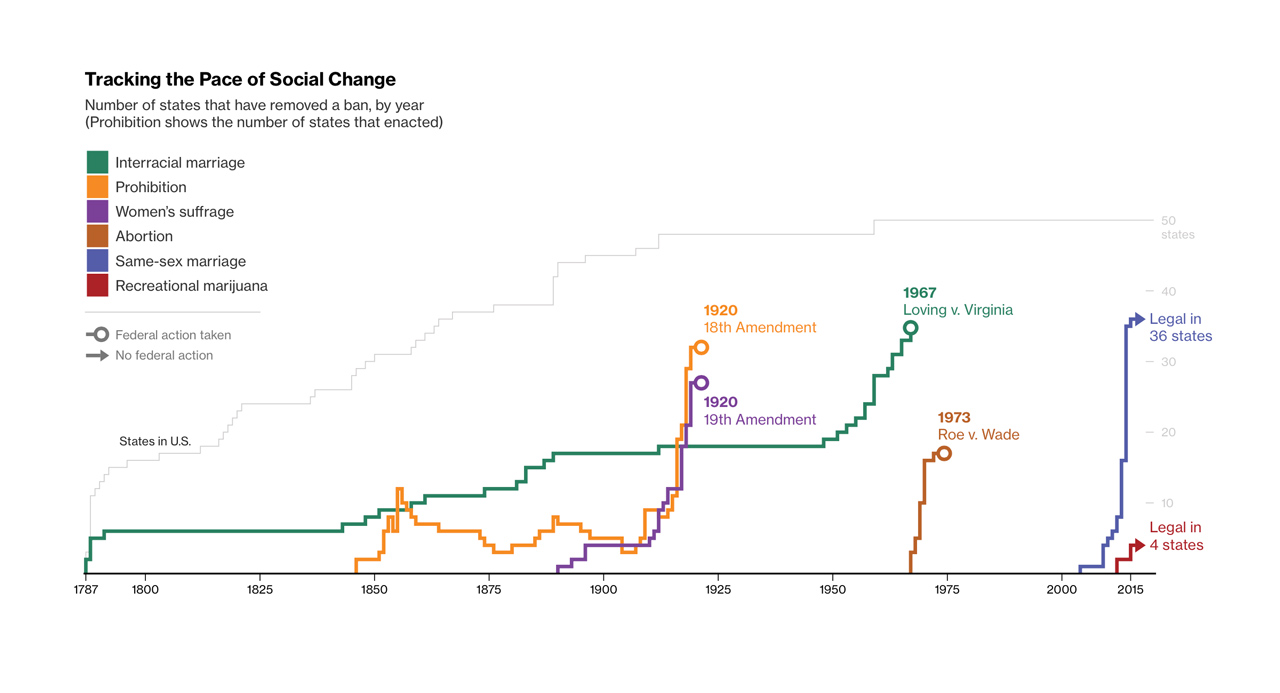That chart is from here, although it’s ultimately by way of here. (The second link has more interactive graphics.)
We’ve mentioned this before, but it bears repeating: in 2001, 57% of the populace seemed to oppose gay marriage. Now, 58% seem to support it. This mirrors other trends: in 1910, only four states allowed women to vote. By 1920, 27 states allowed women to vote.
What gives here? We often hear people lament how slowly it takes for others to “get” something — especially in a work/organizational context — but in reality, that’s pretty fast. 2011 was 14 years ago, and the numbers on gay marriage have basically inverted. That’s kinda nuts and fast, right?
There are two things at play:
1. The 10 Percent Rule: It’s not really called that, but basically it’s the idea of passionate advocates. If 10 percent of people believe something passionately, they can convince a majority on the same concept. Think about even the 1950s, 1960s in America: if your neighbor or co-worker was gay, maybe you had some idea, but it was very hush-hush. Now it’s much more open. Your kids go to school with kids raised by gay parents. (Obama mentioned this in his Robin Roberts interview.) The attitudes change. People become passionate, and influence others.
2. Demographic Metabolism: This basically refers to one generation dying off, and thus their beliefs dying off. Interestingly, this is why your views tend to be more aligned (in some ways) with your grandparents than your parents: every generation basically rebels against and reverses the ideas of their immediate parents. Parents just don’t understand.
In reality, then, it all comes back to this:

